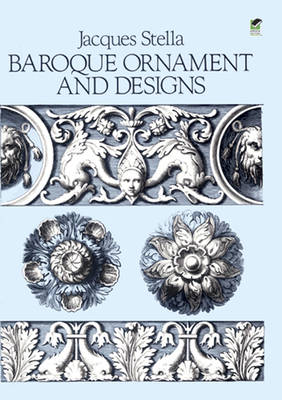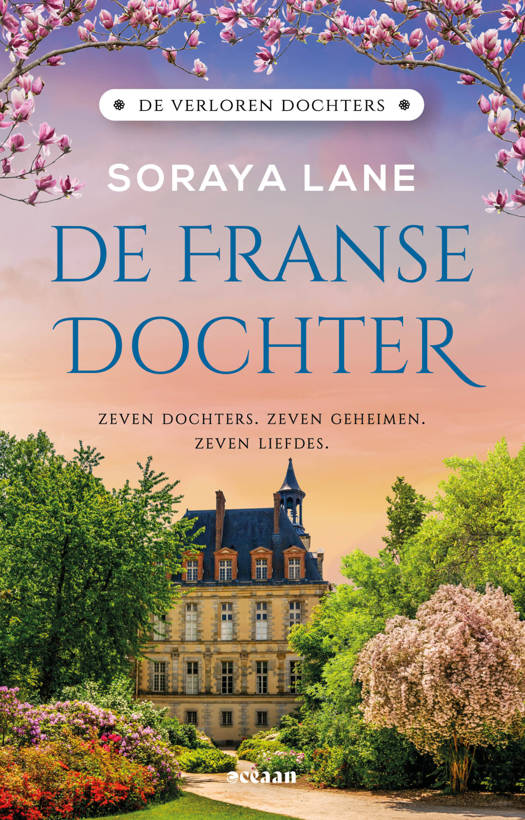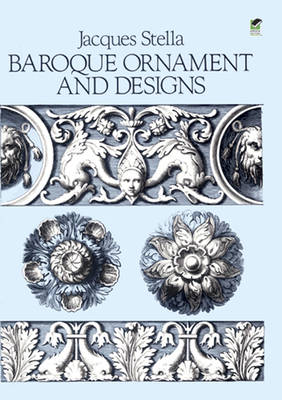
Door een staking bij bpost kan je online bestelling op dit moment iets langer onderweg zijn dan voorzien. Dringend iets nodig? Onze winkels ontvangen jou met open armen!
- Afhalen na 1 uur in een winkel met voorraad
- Gratis thuislevering in België vanaf € 30
- Ruim aanbod met 7 miljoen producten
Door een staking bij bpost kan je online bestelling op dit moment iets langer onderweg zijn dan voorzien. Dringend iets nodig? Onze winkels ontvangen jou met open armen!
- Afhalen na 1 uur in een winkel met voorraad
- Gratis thuislevering in België vanaf € 30
- Ruim aanbod met 7 miljoen producten
Zoeken
€ 9,45
+ 18 punten
Omschrijving
Baroque art and architecture -- extravagant in concept, exuberant in spirit, elaborate in detail -- flourished in seventeenth-century Europe, and through the ages has continued to stir us with its vitality and dynamism and its mood of barely suppressed passion. In the architecture of St. Peter's in Rome, St. Paul's in London, and Santa Maria della Salute in Venice as well as in the works of Michelangelo, Bernini, and Rubens, the Baroque spirit lives today. Now graphic artists can add Baroque flair to almost any graphic project with this magnificent collection of royalty-free motifs.
The seventeenth-century French artist Jacques Stella (1596-1657) embodies the Baroque sensibility. Early in his career, Stella spent seven years in Florence, working for Medici Prince Cosimo II and enjoying the acquaintance and advice of the master engraver Jacques Callot. He spent another ten years in Rome, where he came under the artistic influence of his friend Nicolas Poussin. On his return to France, championed by Cardinal Richelieu, he became court painter to Louis XIII, and founded a career that makes him esteemed as one of the major French artists of the seventeenth century. This book presents engravings executed by Stella's niece after drawings of Classical motifs probably made by Stella during his years in Italy. These engravings, first published in Paris in 1658, comprise a magnificent sourcebook of ready-to-use Baroque design, filled with highly embellished individual ornaments, decorative motifs, and a dazzling array of border elements.
Included are lush florals and foliates, fruits, leaves, birds, shells, acorns, and more--as individual ornaments and rosettes, as repeating motifs in a frieze, and in other useful arrangements. Now this sturdy, inexpensive edition makes them available to a wide audience for convenient reproduction as well as for study, inspiration, and enjoyment.
Baroque art and architecture -- extravagant in concept, exuberant in spirit, elaborate in detail -- flourished in seventeenth-century Europe, and through the ages has continued to stir us with its vitality and dynamism and its mood of barely suppressed passion. In the architecture of St. Peter's in Rome, St. Paul's in London, and Santa Maria della Salute in Venice as well as in the works of Michelangelo, Bernini, and Rubens, the Baroque spirit lives today. Now graphic artists can add Baroque flair to almost any graphic project with this magnificent collection of royalty-free motifs.
The seventeenth-century French artist Jacques Stella (1596-1657) embodies the Baroque sensibility. Early in his career, Stella spent seven years in Florence, working for Medici Prince Cosimo II and enjoying the acquaintance and advice of the master engraver Jacques Callot. He spent another ten years in Rome, where he came under the artistic influence of his friend Nicolas Poussin. On his return to France, championed by Cardinal Richelieu, he became court painter to Louis XIII, and founded a career that makes him esteemed as one of the major French artists of the seventeenth century. This book presents engravings executed by Stella's niece after drawings of Classical motifs probably made by Stella during his years in Italy. These engravings, first published in Paris in 1658, comprise a magnificent sourcebook of ready-to-use Baroque design, filled with highly embellished individual ornaments, decorative motifs, and a dazzling array of border elements.
Included are lush florals and foliates, fruits, leaves, birds, shells, acorns, and more -- as individual ornaments and rosettes, as repeating motifs in a frieze, and in other useful arrangements. Now this sturdy, inexpensive edition makes them available to a wide audience for convenient reproduction as well as for study, inspiration, and enjoyment.
The seventeenth-century French artist Jacques Stella (1596-1657) embodies the Baroque sensibility. Early in his career, Stella spent seven years in Florence, working for Medici Prince Cosimo II and enjoying the acquaintance and advice of the master engraver Jacques Callot. He spent another ten years in Rome, where he came under the artistic influence of his friend Nicolas Poussin. On his return to France, championed by Cardinal Richelieu, he became court painter to Louis XIII, and founded a career that makes him esteemed as one of the major French artists of the seventeenth century. This book presents engravings executed by Stella's niece after drawings of Classical motifs probably made by Stella during his years in Italy. These engravings, first published in Paris in 1658, comprise a magnificent sourcebook of ready-to-use Baroque design, filled with highly embellished individual ornaments, decorative motifs, and a dazzling array of border elements.
Included are lush florals and foliates, fruits, leaves, birds, shells, acorns, and more--as individual ornaments and rosettes, as repeating motifs in a frieze, and in other useful arrangements. Now this sturdy, inexpensive edition makes them available to a wide audience for convenient reproduction as well as for study, inspiration, and enjoyment.
Baroque art and architecture -- extravagant in concept, exuberant in spirit, elaborate in detail -- flourished in seventeenth-century Europe, and through the ages has continued to stir us with its vitality and dynamism and its mood of barely suppressed passion. In the architecture of St. Peter's in Rome, St. Paul's in London, and Santa Maria della Salute in Venice as well as in the works of Michelangelo, Bernini, and Rubens, the Baroque spirit lives today. Now graphic artists can add Baroque flair to almost any graphic project with this magnificent collection of royalty-free motifs.
The seventeenth-century French artist Jacques Stella (1596-1657) embodies the Baroque sensibility. Early in his career, Stella spent seven years in Florence, working for Medici Prince Cosimo II and enjoying the acquaintance and advice of the master engraver Jacques Callot. He spent another ten years in Rome, where he came under the artistic influence of his friend Nicolas Poussin. On his return to France, championed by Cardinal Richelieu, he became court painter to Louis XIII, and founded a career that makes him esteemed as one of the major French artists of the seventeenth century. This book presents engravings executed by Stella's niece after drawings of Classical motifs probably made by Stella during his years in Italy. These engravings, first published in Paris in 1658, comprise a magnificent sourcebook of ready-to-use Baroque design, filled with highly embellished individual ornaments, decorative motifs, and a dazzling array of border elements.
Included are lush florals and foliates, fruits, leaves, birds, shells, acorns, and more -- as individual ornaments and rosettes, as repeating motifs in a frieze, and in other useful arrangements. Now this sturdy, inexpensive edition makes them available to a wide audience for convenient reproduction as well as for study, inspiration, and enjoyment.
Specificaties
Betrokkenen
- Auteur(s):
- Uitgeverij:
Inhoud
- Aantal bladzijden:
- 48
- Taal:
- Engels
- Reeks:
Eigenschappen
- Productcode (EAN):
- 9780486253787
- Verschijningsdatum:
- 1/06/1987
- Uitvoering:
- Paperback
- Formaat:
- Trade paperback (VS)
- Afmetingen:
- 208 mm x 277 mm
- Gewicht:
- 149 g

Alleen bij Standaard Boekhandel
+ 18 punten op je klantenkaart van Standaard Boekhandel
Beoordelingen
We publiceren alleen reviews die voldoen aan de voorwaarden voor reviews. Bekijk onze voorwaarden voor reviews.











